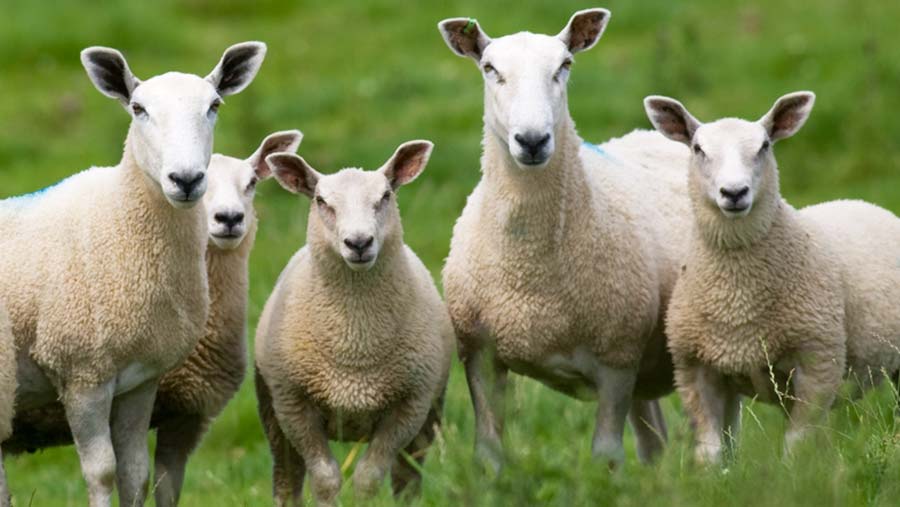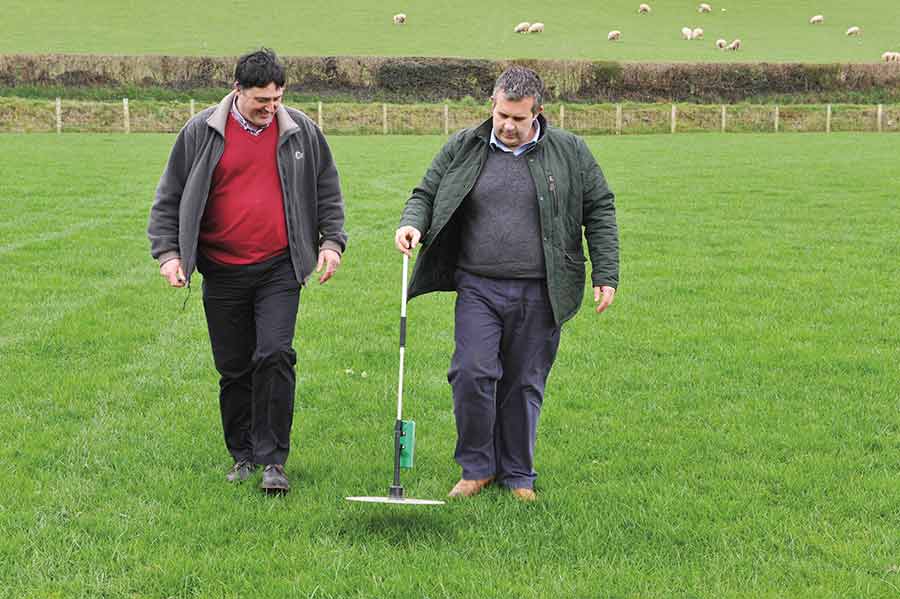How to improve grass yields through soil and nutrient focus
 © Tim Scrivener
© Tim Scrivener Upland farmers could double grass yields by correcting mineral deficiencies and carrying out a detailed nutrient plan, according to a leading independent grassland specialist.
Charlie Morgan said average grass yields in the Welsh uplands are 5-7t DM/ha, but the best grow 12t DM/ha and use 85% of this.
Out of the 2,450 soil samples analysed through Farming Connect in Wales last year, only 3% had the correct nutrient levels for pH, P, K and magnesium.
See also: Take grass silage first cut now, then invest in nutrition
Lime reserves are depleted by rain and the application of nitrogen and sulphur, which increases acidity.
Meanwhile, potash and phosphate levels are also extremely variable across Wales. Potash is often deficient on silage ground while grazing land can have a shortage of both minerals.
Farming Connect
Farming Connect is a Wales-wide service funded by the Rural Development Programme and Welsh government. As part of a series Farmers Weekly is visiting Farming Connect demonstration farms regularly to find out what projects have been undertaken and how performance is benefiting.
“If we don’t feed the soil, we don’t feed the grass. The result is no feed, or more expensive feed, for livestock.
“Farmers need to start considering the potential of their soils and how they can convert nitrogen into something they can sell,’’ adds Mr Morgan.
Mr Morgan says only a small percentage of farmers test their soils and even this process can be a waste of time without a nutrient management plan.
“Farmers get their soils tested, but don’t understand the results and therefore don’t adjust their inputs. A nutrient management plan will give them that information.’’
In Wales, farmers registered with Farming Connect are eligible for 80% funding for a nutrient management plan.
Compaction has become an issue on many farms after months of rain and if soils are damaged, nutrients won’t respond, leading to losses.
Solutions
If we don’t feed the soil, we don’t feed the grass, and the result is no feed, or more expensive feed, for livestock Charlie Morgan, grassland specialist
“Yield will be lost and livestock will need to be housed for a longer period and that costs the business,’’ says Mr Morgan.
“Applied nutrients have an increased risk of surface run-off on compacted soil and the nutrients in the soil profile won’t be as accessible to the roots of the plant because they can’t grow into these areas. There will also be very little worm activity.’’
Mr Morgan says ploughing will resolve compaction issues, but this can be expensive and unnecessary if swards are relatively new.
He recommends a soil slitter for surface damage not deeper than 12.5cm, or a grassland subsoiler or mole plough for deeper, more severe compaction in heavier soils.
“This year, some of the really damaged areas shouldn’t be fixed until conditions improve,” says Mr Morgan
Case study: Innovis’ farming operation at Capel Dewi in Ceredigion
Spending £81.50/ha in annual applications of lime, nitrogen and phosphate is allowing a Welsh upland sheep farm to boost production to 10t DM/ha.
Analysing soils and, crucially, using a nutrient management plan to address deficits is fundamental to the grazing system at Innovis’ farming operation at Capel Dewi, Ceredigion.
“It’s all about investing in the right places,’’ says Dewi Jones of Innovis.

Charlie Morgan and Dewi Jones
Soil samples taken from this Farming Connect Innovation Site show that 89% of the fields tested had the correct pH, phosphate and potash levels.
It makes economic sense to invest in a nutrient management plan to target the nutrients and manures where they are needed,’’ says Mr Jones.
At the Innovis farms, compaction is minimised through grazing stewardship. There has been heavy investment in soil and nutrient management, reseeding and rotational grazing infrastructure on part of the farm.
“It’s about allocating different areas of the farm for different jobs,’’ says Mr Jones. “We have invested highly on 75% of the farm, but the steeper, drier banks used as buffers don’t demand high investment.
“In effect, our steeper banks are the equivalent of sheds, but it is much cheaper to have sheep outside than housed. The grass doesn’t need to grow quickly in these areas as we wedge up cover through the summer for use as a standing crop in the winter.’’
Average field sizes are 4ha and they are subdivided with solar-powered electric fences during the season to match production.
Flexibility is key, says Mr Jones. “Our winter swede crop wasn’t as heavy as expected this season, so we buffer-fed with silage and moved leaner ewes to outlying fields sooner.
“Condition scoring and segregation are vital tools to manage sheep on forage-based systems. Grazing strategy depends on the season, so you have to be prepared to be flexible.”
